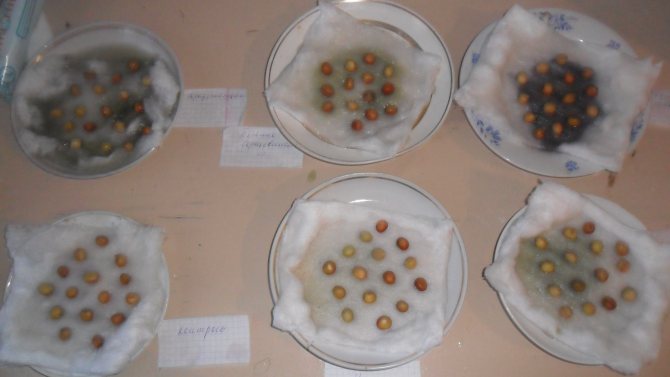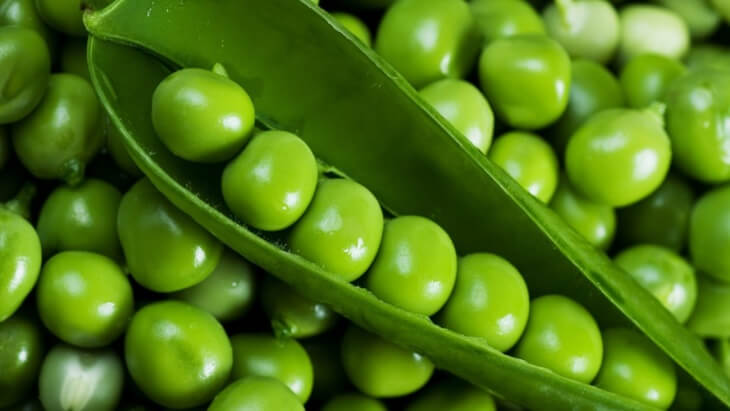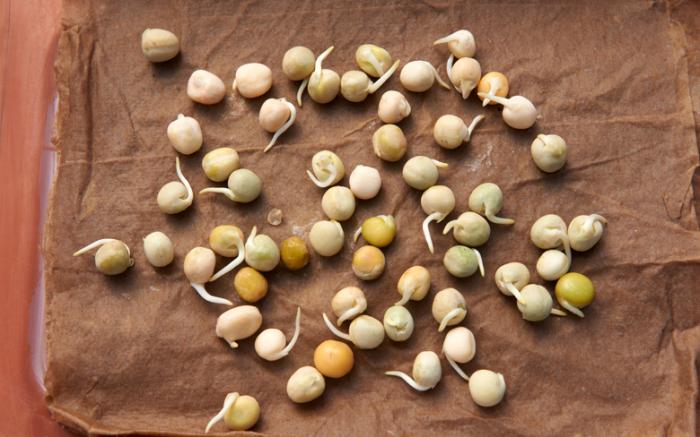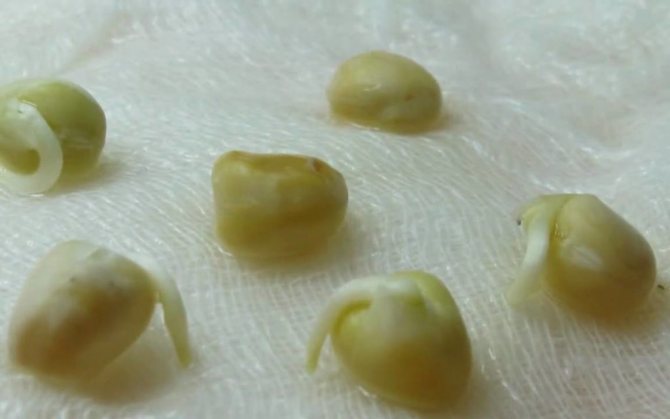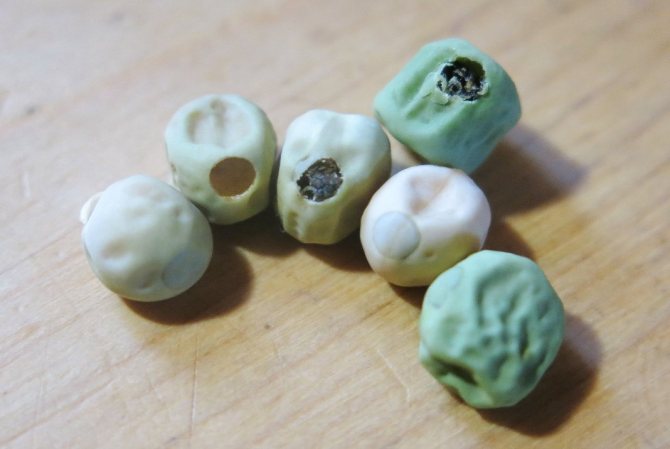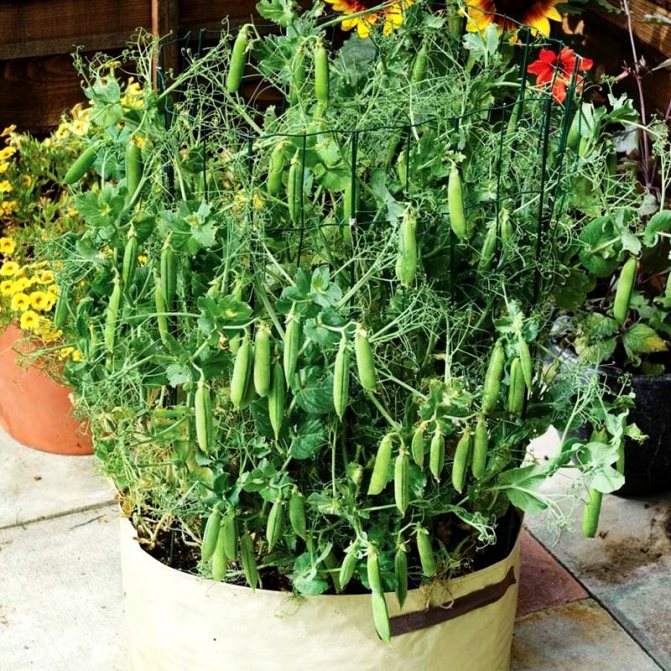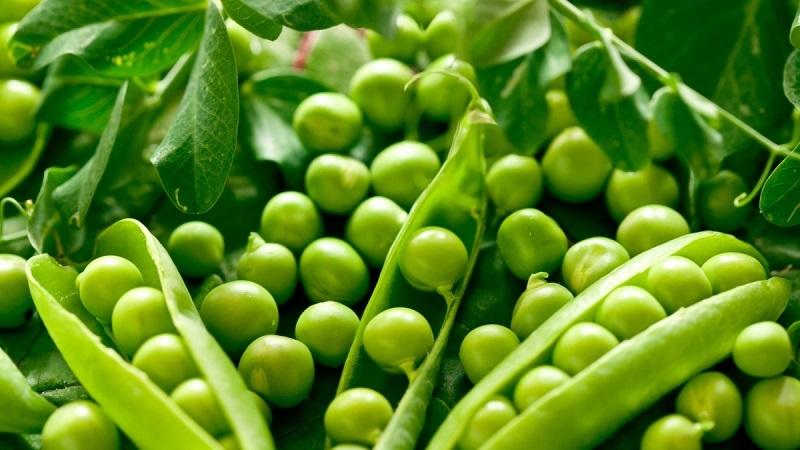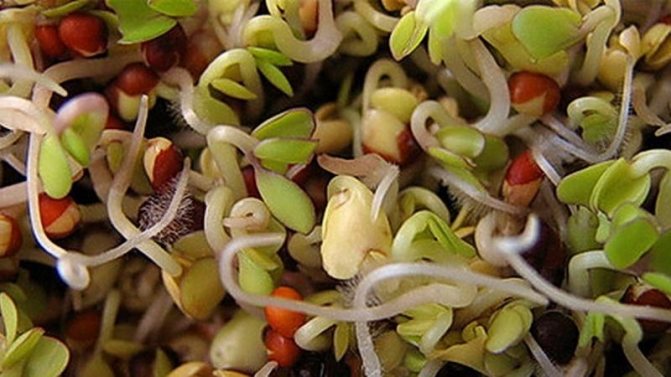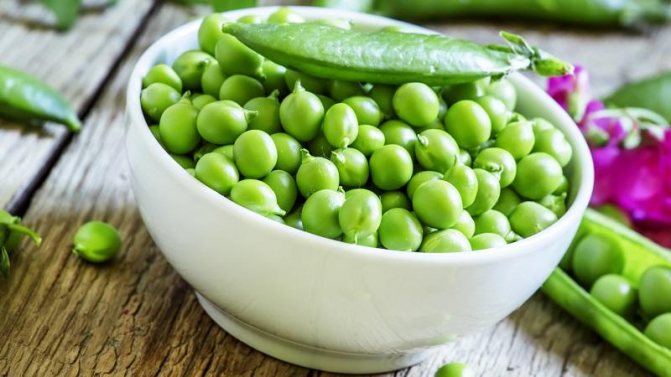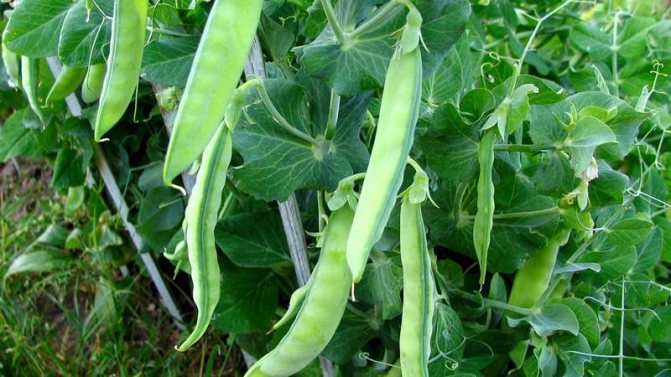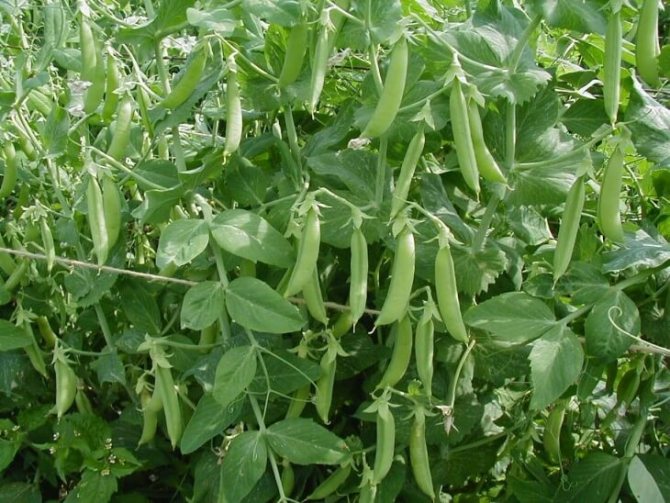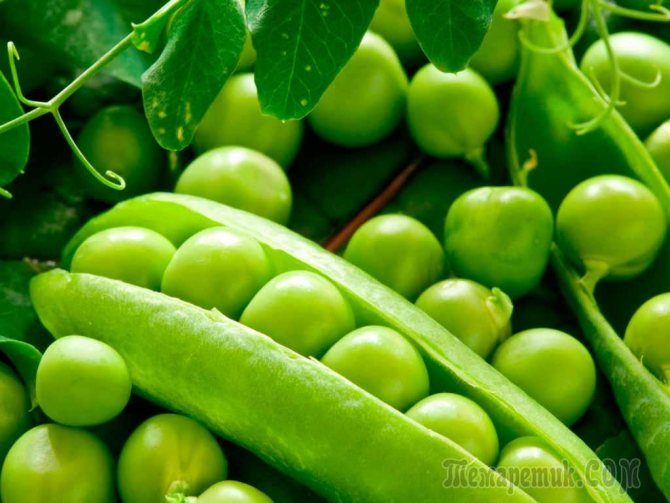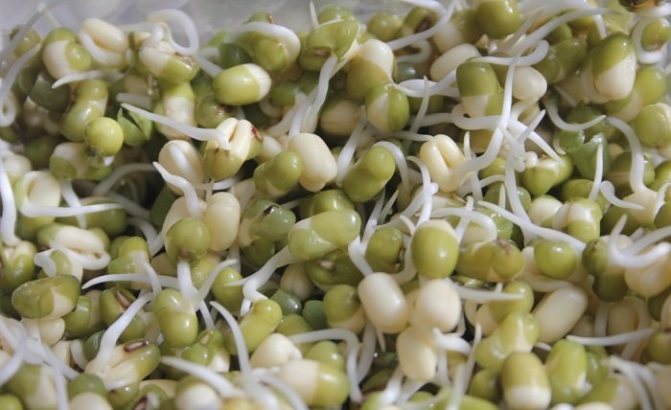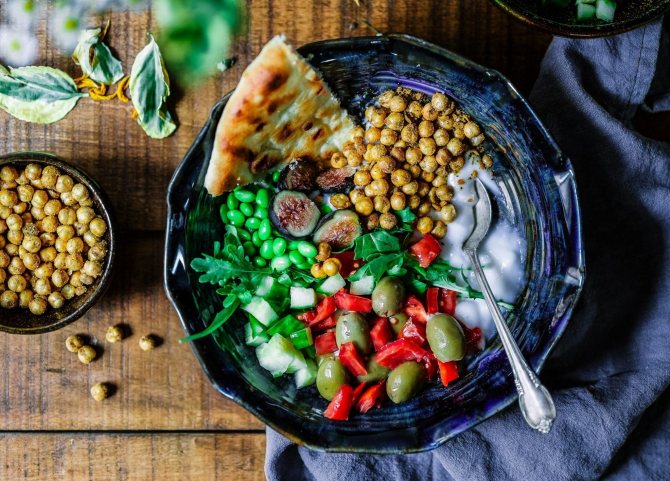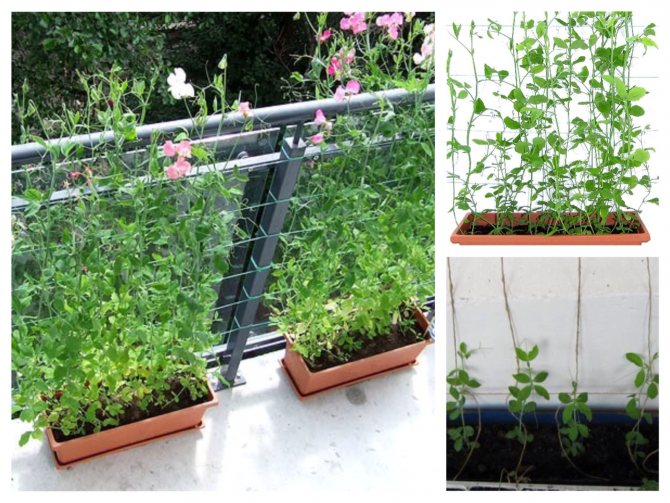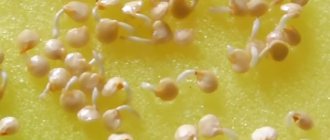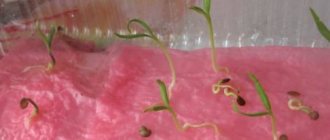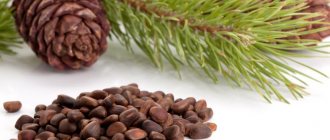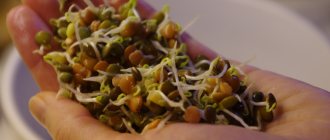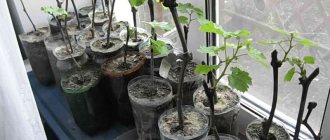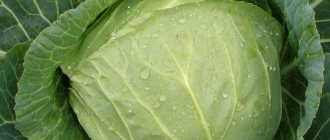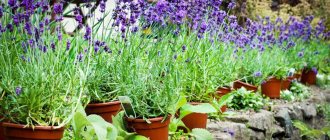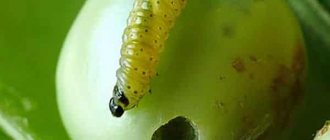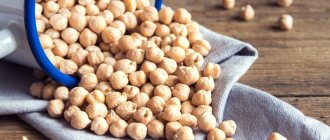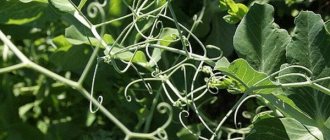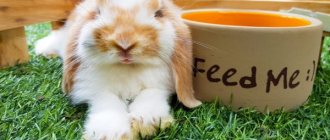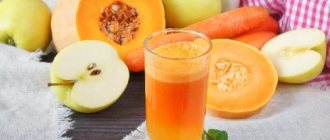Author rating
The author of the article
Yakov Pavlovich
Professor, Head of the Department of Vegetable Growing
Articles written
153
It is known that sprouted grains are a storehouse of useful vitamins and minerals. Sprouts are obtained from various legumes and grain crops: wheat, buckwheat, oats, lentils, barley, chickpeas, etc. Among all the variety, peas stand out for their usefulness and excellent taste. Such food is considered healthy and complete. Next, let's look at how to germinate peas correctly.
Variety selection
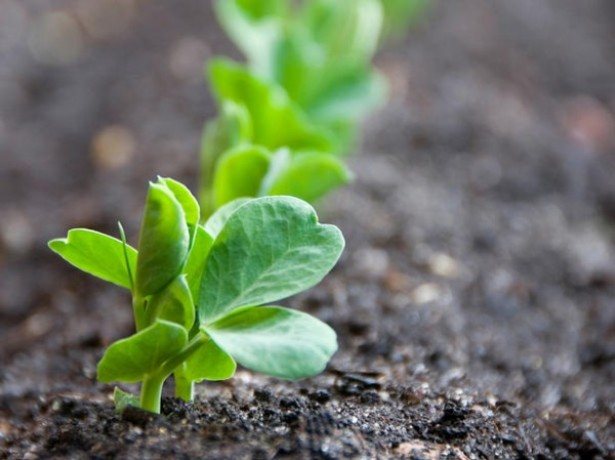
People have long been engaged in the cultivation of peas - a valuable leguminous crop used in cooking and for medicinal purposes. Growing peas at home is a simple agricultural operation.
Peeling and sugar varieties are the most optimal in terms of taste and technical qualities. Sugar peas have a pleasant taste, along with peas, the shells of young beans are also eaten. Becoming shriveled at full maturity, it does not lose its taste. Sugar pea seeds are canned and frozen.
Shell peas are hard and easy to grow. This subspecies is most often used for drying and then used in side dishes and soups. Mature shell pea seeds can also be frozen and canned.
Pea seeds are classified according to the ripening period:
- Early, ripening in no more than 60 days: Avola, Berkut, Vera, Vegetable 76, Early Gribovsky 11, Premium, Amber
- Medium - 70 days after germination, edible fruits can be harvested (Adagumsky, Emerald, Dinga, Fragment, Winner T-33)
- Late - more than 80 days pass from germination to the formation of peas (Atlant, Sugar 2, Voskhod, Late cerebral improved, Perfection 653).
Every grower has different goals for growing peas. When choosing, you need to build on this. By planting several varieties of different ripening periods, you can significantly extend the pea season.
Medicinal properties for diseases
Sprouted peas with some diseases have a beneficial effect on the human body, if the product is consumed correctly.
With diabetes
Sprouts play a preventive role in diabetes. Also, the product should be included in the diet of those who have a predisposition to diabetes mellitus.
Expert opinion
Stanislav Pavlovich
Gardener with 17 years of experience and our expert
Ask a Question
Attention! The sprouted product is able to regulate the amount of sugar in the blood in patients with a history of diabetes mellitus.
With gastritis
If we talk about sprouts, then at the time of an exacerbation of the disease, it is not recommended to use it. But in other cases, it is useful, but in small quantities. Experts recommend preparing dishes based on fresh peas, since dry peas can provoke the onset of the disease.
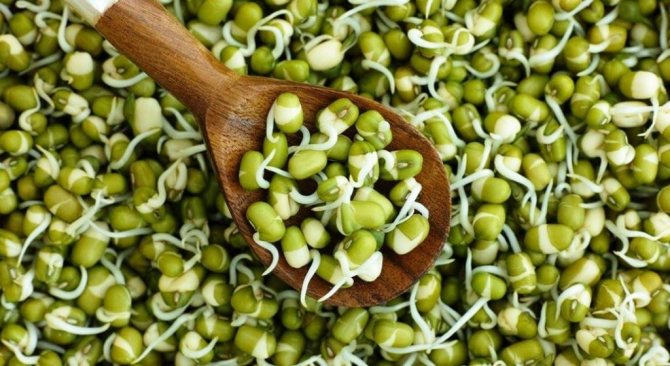

Sprouted product with gastritis is allowed to be consumed. It contains a vegetable protein that promotes the healing of the stomach walls. Also, the product has the ability to restore mucous membranes. Nicotinic acid, which is part of the product, affects cholesterol levels and the patient does not gain excess weight so quickly.Dietary fiber has a beneficial effect on the digestive tract, improving peristalsis.
With pancreatitis
Peas should not be included in the diet of patients with pancreatitis. Otherwise, the risk of flatulence, diarrhea and intestinal colic increases. Also, do not overuse the sprouted product.
When the disease is mild, the sprouts are beneficial due to their high protein content, which is involved in the repair processes of the pancreas.
Features of growing at home
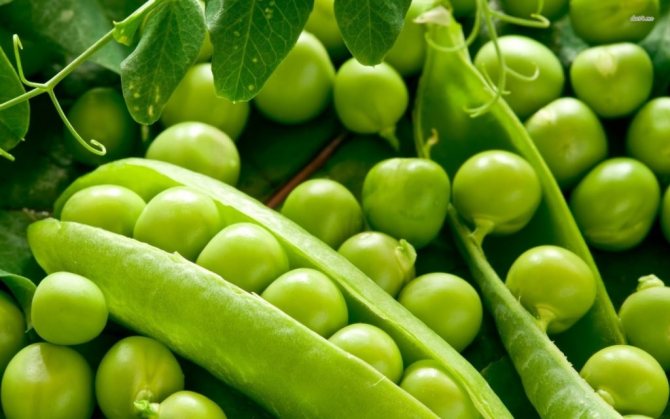

For balconies and apartments, pea varieties with limited growth are better suited. In this case, you do not have to erect complex structures for the location of vertical lashes.
Peeling varieties for home cultivation are suitable:
- Adagumsky - ripens early, does not require supports, is used for fresh consumption and canning
- Early Gribovsky 11 - early ripening, fruitful, rises in height no more than 60 centimeters, has a universal purpose
- Vegetable 76 - a very early fruitful variety with medium-sized peas with excellent taste and a stem height of 70 centimeters
- Hawa pearls - in indoor conditions, the height of the plant reaches 80 centimeters, the peas have an unusual greenish-yellow color, they are mainly used fresh.
At home, you can plant low-growing sugar varieties:
- Zhegalova 112 - a plant up to 60 centimeters tall, very tasty peas do not have voids
- Sugar - on a stunted stem with a height of less than 60 centimeters, there are many branches with tasty beans with a delicate structure
- Sugar 2 - the stem extends to a height of 70 centimeters, but does not lie down, only requires a garter as a safety net.
To grow peas at home, you will need a planting container (wooden box or plastic container) and seeds. The soil substrate should consist of a third of loosening materials: humus, sawdust, straw. To enrich the planting soil, mineral fertilizers dissolved in water can be used.
Before planting, pea seeds are recommended to be treated with preparations that contain boron and molybdenum. An increase in germination and a more active growth of shoots is provided by the bacterial fertilizer Nitragin, which is used according to the instructions.
Seeds are planted in even rows in moist, loosened soil to a depth of 2-3 centimeters. The spacing between the peas should be 1-2 centimeters, between the rows - 2-3 centimeters. After planting, the legumes are recommended to be watered gently using a strainer for better water spraying.
The container must be kept in a warm place until the sprouts appear, but not on the heating battery. It is also not recommended to put it on the windowsill: due to the low temperature, the seeds can rot in the ground.
Before the first shoots appear, you need to regularly moisten the soil, preferably with a sprayer. The green seedlings will appear in the boxes in a few weeks. Peas can be further grown on the windowsill or young plants can be transplanted into open ground.
Dish recipes
There are many recipes for salads that are prepared from sprouted peas. The most interesting options:
- Radish (4 pcs.), Cucumber (2 pcs.), 50 g of sprouted product, 60 g of feta are mixed in a salad bowl. For dressing, you need to combine olive oil, mustard, orange juice and balsamic vinegar. Sugar and salt are added to taste.
- Sprouted peas are poured with boiling water. While the product is in the water, cut the bell pepper, tomato and red onion. A warm product is added to the chopped ingredients. The salad is seasoned with vegetable oil. The dish will be an excellent addition to meat.
Pea sprouts are also added to the vinaigrette. The product complements the salad with an original taste.
How to plant on a windowsill?
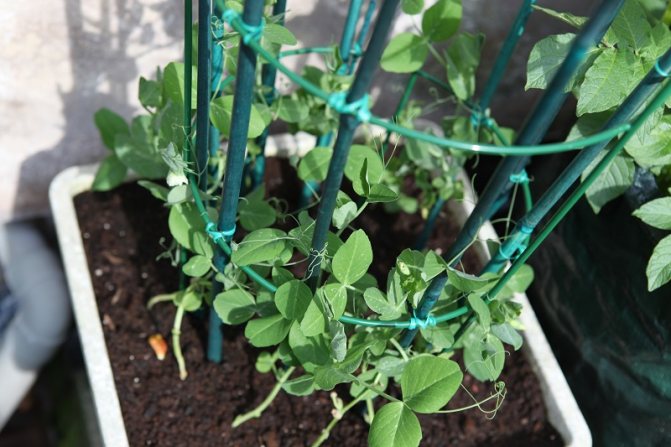

To grow peas on a windowsill, you need plastic or wooden boxes. Sprouts are planted in even rows in grooves at a distance of 20 centimeters. An interval of 10-15 centimeters should be observed between plants.
After that, the grooves must be carefully sprinkled with earth, lightly tamped and poured from a watering can. The place for the location of the peas on the windowsill should be chosen on the sunny side of the room, since this is a photophilous plant.
When the sprouts reach a height of 20 centimeters, it is required to hang a coarse mesh over them, along which the green shoots will curl. This makes harvesting easy. For an even distribution of light for each sprout, it is necessary to direct the stems curling along the net.
Plant diseases
Lambda-based chemicals can be used to combat
The most common disease for this species, according to gardeners, is the leaf roll or pea moth. It is a small caterpillar that hibernates in the soil.
The butterfly flies out just in the period of abundant flowering, and lays eggs on the stems and leaves of plants. Caterpillars appear and eat the peas. Thus, your rich harvest can be reduced to zero.
To combat, you can use chemicals based on lambda - cyhalothrin. Only the use of this agent should be carried out before the formation of the fruit. Otherwise, the chemical can enter food through the crop. The difficulty lies in the fact that at the stage of processing, the butterflies have not yet laid eggs, and spraying will not give the desired result.
From folk remedies, you can use double spraying with infusions of dandelion leaves or onion peels. Infusions of tomato tops or garlic can also be effective. The tops need about 3 kg per bucket of water, and garlic - 20 g. The chopped components are poured with water and insisted for a day. After the plants are sprayed.
Moreover, both types of infusion (tomato and garlic) help in the fight against such a pest as the pea aphid.
Also, peas are often subject to diseases such as powdery mildew. It starts from excessive moisture and thickening of crops. For such a disease, you can spray the plantings with sow thistle infusion - a bucket of water is needed for 300 g of leaves.
After that, the garden is treated twice with a week break.
Video about the tricks of growing and the secrets of peas
To combat the main common diseases, it is recommended to maintain a break in planting for at least 5 years in one place. It is also necessary to remove plant residues well after harvest or to bury them thoroughly. And it is better to burn stems damaged by diseases.
It is advisable to observe the sowing time so that the fruits can form before the beginning of abundant humidification of the air or the numerous emergence of insects.
Growing on the balcony
Polka dots love good lighting, so it is recommended to choose the lightest balcony for their cultivation. A plant that can withstand low temperatures down to -5 ° C will bring good results even on an unglazed balcony, although for the initial stage of growing it is better to use a window sill in an apartment.
A flower pot is not suitable for the role of a planting container for peas. It is best to use an oblong plastic or wooden box with holes in the bottom to drain excess moisture.
Pea care at home
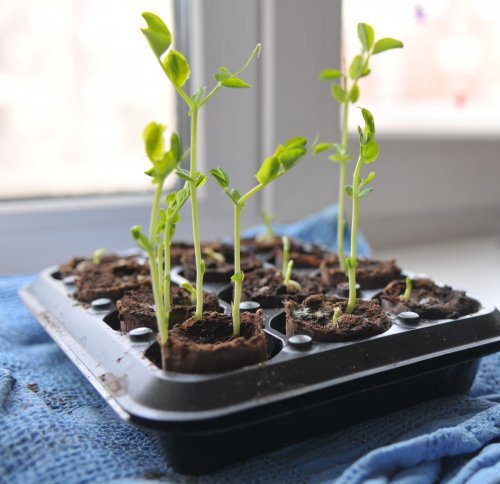

The plant is very unpretentious in care, so growing it at home will not be difficult.
Weeding and loosening
When growing peas in a garden bed, it is necessary to periodically loosen the soil, which provides oxygen to the roots of plants. Weeding the area regularly will help get rid of the weeds that hinder the normal growth and development of plants.
Watering
As the surface layer of the soil mixture dries up, the peas should be watered. After each watering, it is necessary to loosen it.Maximum air penetration to the root system helps to obtain a good harvest of beans at home.
Peas also respond well to hilling, which is best done after watering. To reduce moisture evaporation, it is recommended to cover the soil between the grooves.
Preparation of soil mixture
Peas can be planted in the garden soil harvested from September to October. It is recommended to take the land from those areas where nightshade or pumpkin crops have recently grown. In a 1: 3 ratio, the soil taken is mixed with loosening components: small stones, sand, peat, sawdust.
Before planting peas on the balcony, it is better to treat the soil mixture with a special preparation Fitosporin that prevents fungal and other diseases (dilute 15 milliliters in 10 liters of water).
Top dressing of the soil
The quality of the beans depends on the timely feeding of the crop. To fertilize the earthen mixture, you can also use liquid mineral fertilizing (Juno, Oracle, Uniflor). Plants, before the formation of ovaries, must be fertilized with phosphorus (simple and double superphosphate) and potassium (potassium salt, potassium chloride), mineral preparations.
For prevention, it is recommended to fertilize the soil with trace elements containing copper (Bordeaux liquid, copper oxychloride, copper sulfate). Their action is aimed at destroying harmful bacteria and strengthening the stems and leaves of plants.
Comments (8)
Anna
03/08/2017 at 00:04 |
Peas are fairly easy to grow. I plant in approved soil, weed once if necessary. I always plant early, and when I harvest from it, then I plant even late. Planting peas is also beneficial: I preserve them for the winter and do not have to spend money on peas for salads. I also cook soups with young peas and freeze them for the winter.Reply
Julia Expert Plodogorod
07.07.2019 at 17:20 |
Hello Anna! If you grow peas in the open field, then in addition to weeding, we recommend adding more loosening and a little hilling of the beds. In addition, to make it easier to harvest, it is better to prepare supports or a trellis even before planting.
We would like to note that the use of this technique not only helps with the collection of pods, but also protects the plant from fungal diseases, as it improves ventilation of the bush. And given that early varieties are preferable, it is necessary to tie it up. After all, those plants that have fallen to the ground will develop more slowly, later form ovaries and there may be fewer of them.
In open field conditions, peas also require frequent and abundant watering. If possible, we recommend using a drip irrigation system. In addition to the described care measures, in order to increase the quality and volume of the crop, we recommend collecting ripe pods every day. So that the plant does not waste energy on already ripe peas.
Of course, if the soil on the site is very fertile and pre-fertilized, this may be enough. But, taking into account the fact that you plan to harvest twice, later planting a late variety, it is better to use some kind of potassium-phosphorus agent for feeding during the flowering period.
In addition to the activities described, we do not recommend thickening the planting. Also, it is better to prevent the appearance of the leaf roll. This is especially important given that the legume will be grown for a long time in several passes. You can use the drugs Fufanon, Actellik or Karbofos.
Reply
Elena
18.08.2018 at 14:16 |
And we love peas. I don’t know my variety, but I plant it from year to year and at the beginning of July we already eat peas. I don’t like canning, I always just ice cream. I use it for many salads - vinaigrette, Olivier, etc., as well as decorating many dishes.
Reply
Julia Expert Plodogorod
07.07.2019 at 17:42 |
Hello, Elena! This is a really tasty and healthy culture that is widely used in cooking. We would like to note that if you cultivate peas from year to year, you need to follow the rules of crop rotation, and not plant a legume plant every time in the same or adjacent area.
It is recommended to plant this plant after cereals, as well as potatoes or beets. It is best to use as predecessors those varieties that do not suffer too much from weeds and do not self-propagate. Still, those species that take a lot of moisture and nutrients from the ground are not suitable.
Garden plants, which suffer from similar diseases and are affected by similar harmful insects, are also bad predecessors. These are all legumes, as well as perennial grasses.
Crops that belong to legumes, including peas, cannot be placed on the same plot for several years in a row. The optimal interval is 4 years. Otherwise, the bushes will suffer greatly from pests. For example, weevils and pea aphids are dangerous harmful insects.
In any case, we recommend not to neglect preventive measures and improve the composition of the soil with fertilizers after planting. It is better to dig the site in the autumn in order to mechanically remove the pests that have taken refuge there for the winter.
In addition, on the first spring days, when frosts have passed and in autumn, after the entire harvest has been harvested and perennial plants have passed into a dormant period, you can treat the garden with a Bordeaux mixture or another copper-containing preparation. But, so that an excess of copper does not accumulate in the soil, Fitosporin can be used periodically. It is a versatile remedy for both pests and fungal infections.
Reply
Natasha
20.08.2018 at 00:07 |
It almost always gives a good harvest, like beans, before we always planted it when we had a retirement garden outside the city. The harvest was so rich that in winter I did not buy it at all.
Reply
Julia Expert Plodogorod
07.07.2019 at 17:59 |
Hello Natasha! So that your pea beds always give a good harvest, we recommend using one trick. It consists in pinching the bush. The main shoot needs to be pinched, after which the plant will release side lashes. We would like to note that this method is only suitable for growing a pot on a trellis.
The procedure can be carried out regardless of the age of the bush. Even if he is very young. Only, it is better to do it in the morning, so that the injury does not affect the general condition of the plant too much and has time to dry out.
If there is a place, and it is required that the culture has grown even more, it is possible, after a time, when the lateral branches develop, pinch them too. Then again, already from these secondary lashes, several more are formed. This method allows you to increase not only the amount of the crop, but also the fruiting period.
We recommend that you carry out the described procedure at different times for the bushes in the garden. Then the crop will be formed in stages and the entire fruiting period will stretch. This is more suitable for varieties, which is preferable to eat fresh.
We would like to note that although the described method can provoke a plant to build up vegetative mass, and, therefore, the formation of more ovaries, it is necessary that the bush has the strength to ripen the pods. To do this, it is necessary to provide the bed with sufficient watering, at least 10 liters per 1 sq. m, as well as nutrients from fertilizers.
In the described case, it is better to use mineral agents, for example, nitroammofosku. It is recommended to do this only in liquid form. First of all, so as not to burn the rhizome, and in addition, so that the useful elements are quickly absorbed by the plants.
Reply
Oksana
06.07.2019 at 18:37 |
Didn't try to grow peas at home.Is it disease resistant? How does the ventilation endure? After all, it is very inconvenient to remove the pot from the windowsill every time you open the window. Maybe someone has grown and can share their experience.
Reply
Julia Expert Plodogorod
07.07.2019 at 18:18 |
Hello Oksana! Growing peas on a window is not much different from many garden plants that are cultivated this way. So that the plant does not start to hurt, you need to pre-treat the seeds and soil.
Pea seeds are usually soaked before planting. The optimal time is 4-5 hours. You can add Fitosporin to the water according to the instructions, or a solution of dry boric acid at the rate of 2 grams per 10 liters of water. This product dissolves better in hot water, but it is certainly better to cool the solution before soaking the seeds.
The soil mixture can be prepared from garden or forest soil, old sawdust and rotted humus. All components can be taken in equal proportions. So that the plants do not get infected from the soil, it is better to disinfect it first. To do this, the earth is either roasted in the oven, or watered with drugs for diseases.
You can use a manganese solution or those agents that were used to disinfect the planting material. Further, although the planting area is not large, you should not sow the plants too densely, the bushes should be well ventilated. To achieve this, you can sometimes thin out the crown.
Very often, diseases appear on indoor plants cultivated due to poor drainage and moisture stagnation. To prevent this from happening, it is worth laying a layer of small pebbles, shells or sawdust on the bottom of the planting container. The holes for the drainage of excess moisture should be evenly distributed throughout the bottom of the vessel.
Another prerequisite for diseases is lack of lighting and cold. As for pests, aphids sometimes grow on peas at home. Therefore, you need to immediately get rid of the ants that have appeared on the windowsill and periodically inspect the beds.
As for the draft, then of course it is better to protect the plants from it. If the window will open, it is better to choose another place for the location of the landings. Or, it is worth gradually accustoming the plant to fresh air. But, this is permissible only in the summer.
Home-grown shrubs are softer and less resilient than outdoor plants. Therefore, care must be appropriate. Do not change the microclimate drastically, because plants can get sick.
Reply
Outdoor cultivation
Pea seeds are planted in open ground in April-early May, when the ground is still damp. Pea seedlings are planted in late spring. Peas are an excellent precursor for all vegetable crops. The root nodule bacteria enrich the soil with nitrogen.
The seeds are buried in the soil to a depth of 3-4 centimeters, otherwise the birds will peck the grains with pleasure. It is necessary to water the plants regularly: with a lack of moisture, ovaries and flowers fall off. Peas grown for grain are harvested once, when the crop is 70% ripe. The culture intended for canning or fresh consumption is harvested many times every 2-3 days.
Before growing peas in the country, it is better to germinate its seeds, soaking them for 12-18 hours and regularly changing the water every 3-4 hours. You can place the seeds in a damp cloth for a few days to allow the sprouts to hatch as quickly as possible. For garden or summer cottages, tall varieties are used, for which the supports are adapted.
Peas can be grown by combining with other crops. With a mutually beneficial joint planting of plants, each of them contributes to the creation of optimal conditions for the qualitative growth of the other.Peas enriching the soil with nitrogen go well with carrots, corn and, due to the different ripening periods, do not compete with them for nutrients.
Contraindications and harm
We figured out the benefits of pea sprouts, so it's worth mentioning the possible harm that the product can bring.
Sprouted peas are contraindicated:
- with an acute form of gastritis;
- patients suffering from nephritis;
- people with gout and urolithiasis;
- persons suffering from gastric and duodenal ulcers.
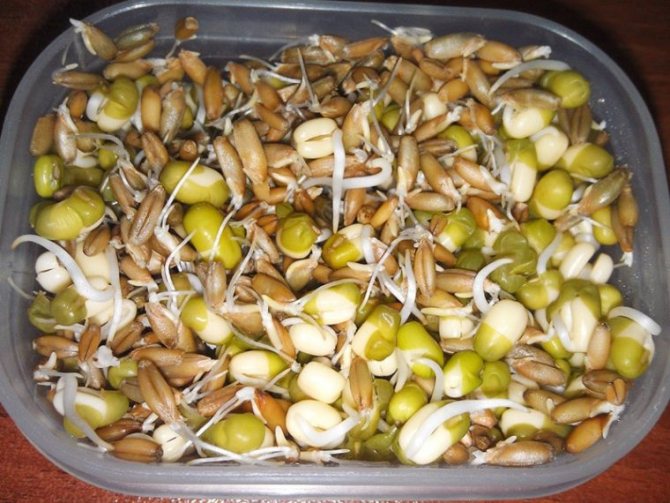

Peas contain a large amount of fiber, which provokes discomfort in the digestive tract. Also, seedlings are poorly digested by people of age and small children.
The simultaneous consumption of sprouts with dairy products provokes gas formation in the intestines.
Harvesting
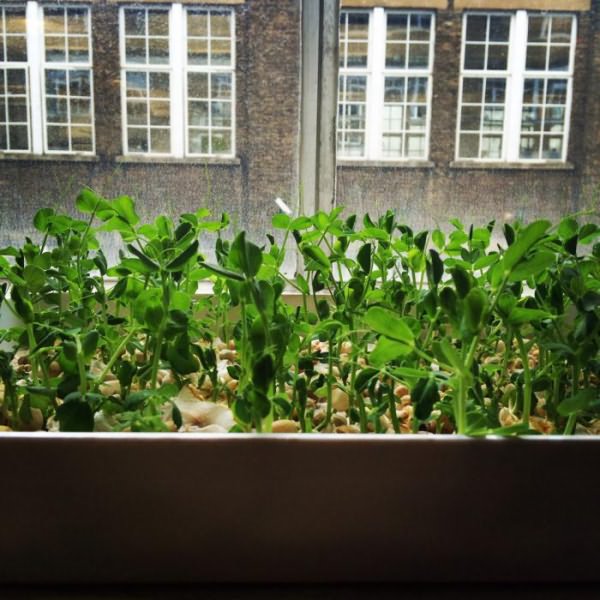

Peas bear fruit for 2 months. Ripe pods are harvested in the morning. From one shoot per season, you can get about half a kilogram of juicy peas. After the completion of fruiting, the plants must be cut off.
Peas can be planted for more than just beans. Lettuce leaves are replaced by juicy greens containing a sufficient amount of biologically active substances and useful vitamins. For example, the daily intake of vitamin C contains only 100 grams of young peas.
When growing green peas, it is better to choose undersized varieties that have more succulent leaves than cereals. To constantly get fresh greens, you need to sow peas in stages. After cutting off the hardened stems and breaking off the leaves, the plant develops new shoots.
Secrets of Mother Nature
In the category of legumes, peas are the most valuable plant product. In terms of its composition, it stands out among its counterparts with an increased amount of useful macro and microelements, proteins, carbohydrates.
Nutritionists recommend using it for food for people suffering from:
- Anemia;
- Anemia;
- Diabetes;
- Tuberculosis;
- Overweight.
However, sprouted peas can still bring the greatest benefit to humans. Today it is the most functional food product that allows the human body to be replenished with valuable biologically active ones:
- Enzymes;
- Antioxidants
- Fiber;
- Phytohormones;
- Polysaccharides;
- Pectins;
- Proteins of plant origin.
Unlike dried peas, its three-day-old seedlings are a biogenic product with a natural component, where the amount of water-soluble enzymes, which are synthesized from inactive growth substances of the embryos, is ten times higher.
They are natural catalysts that break down all the complex nutrients of traditional dry grains into simpler ones. At the same time, due to the splitting of high molecular weight biopolymers, low molecular weight soluble substances are obtained that are easily absorbed and digested by our body.

